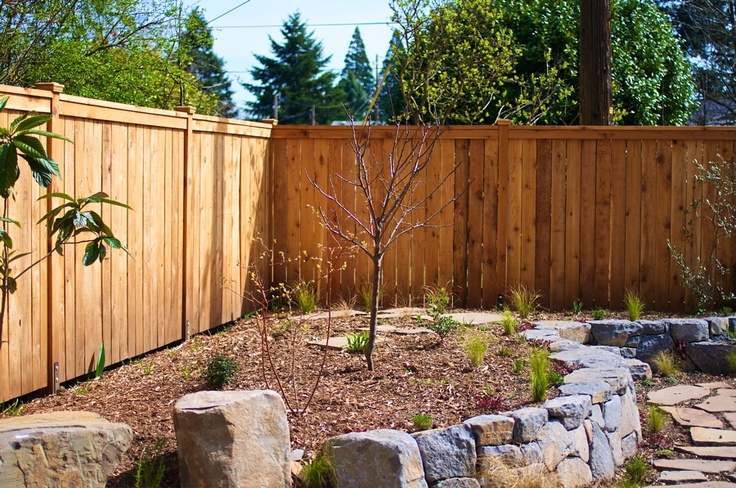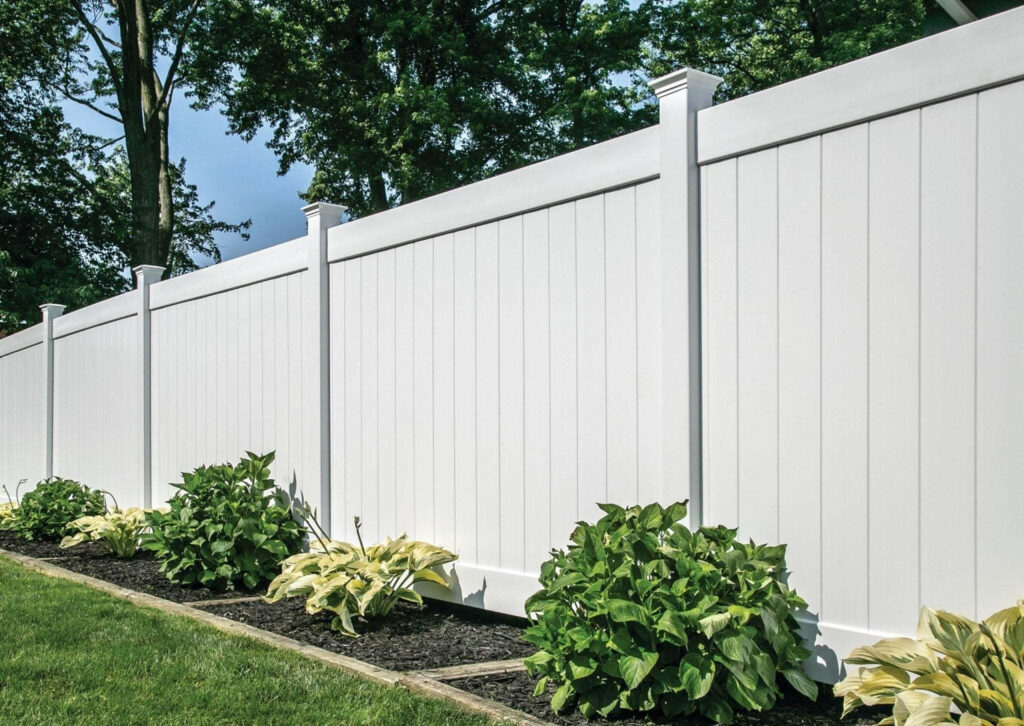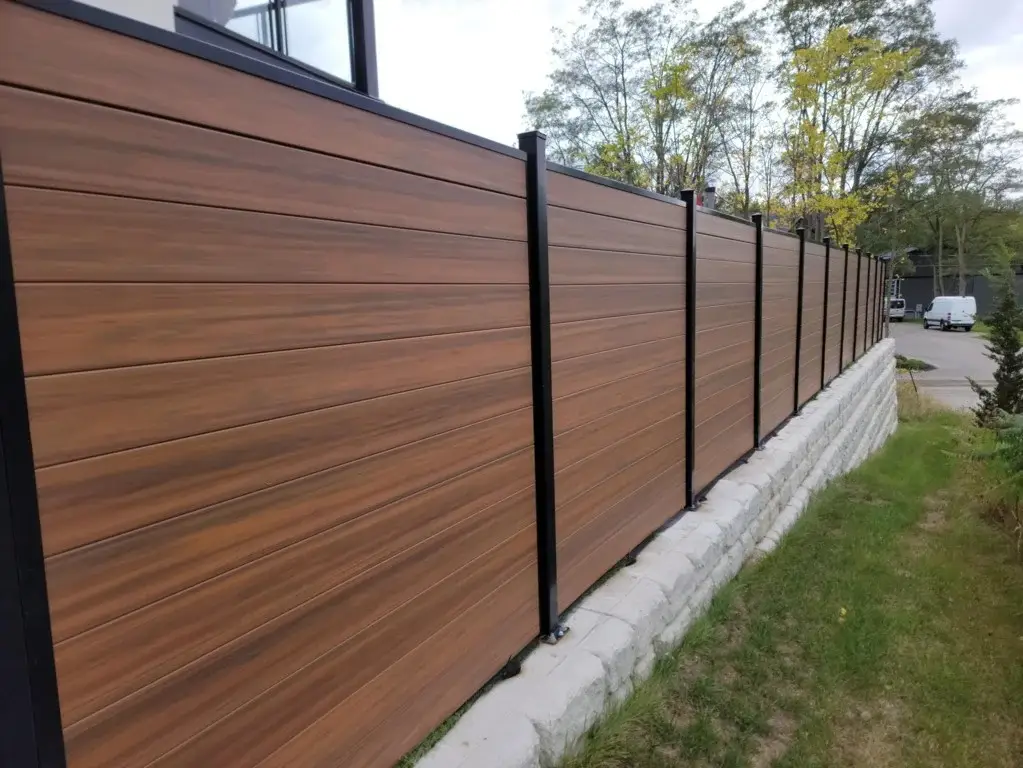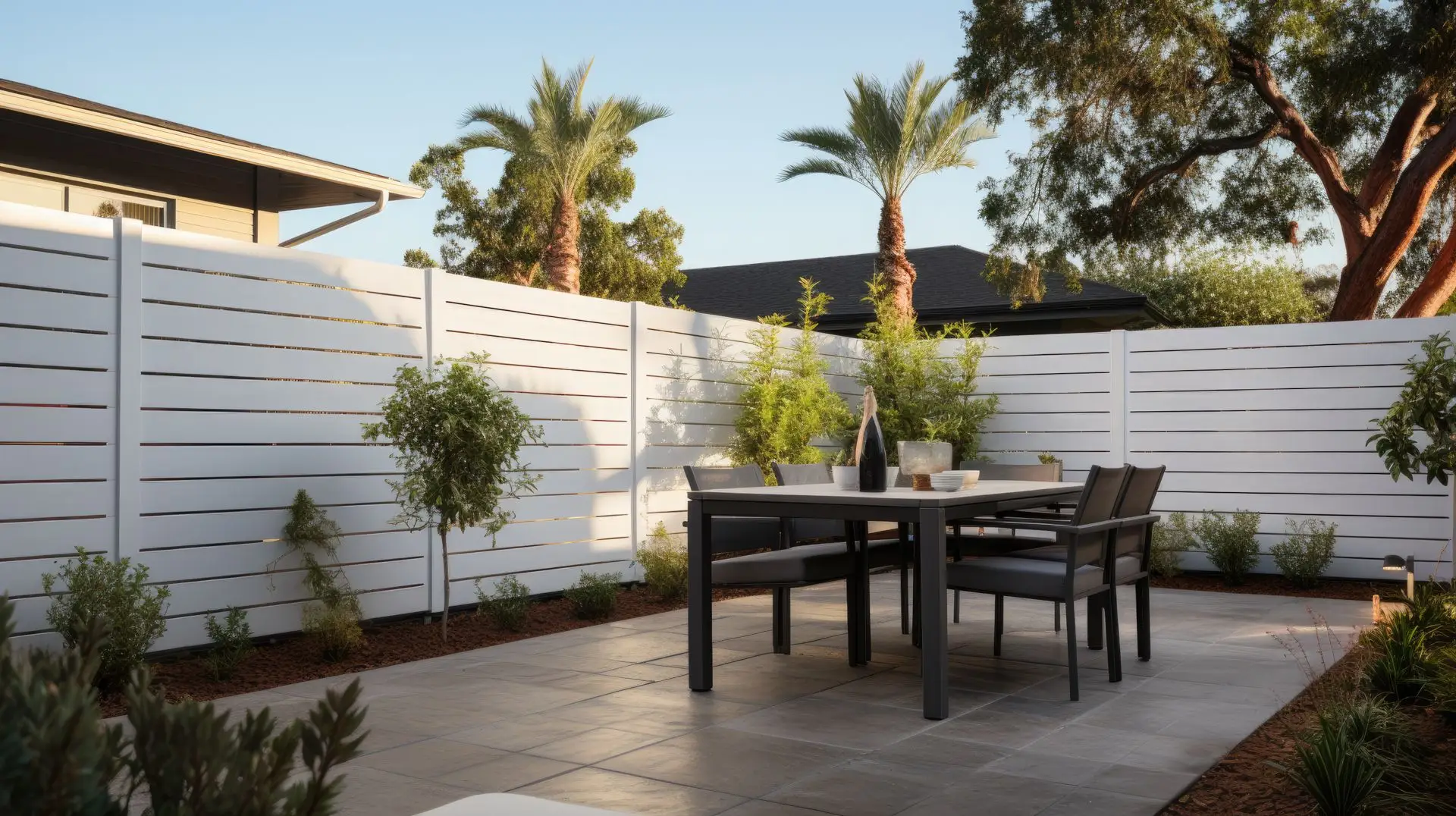When it comes to building a new fence in London, Ontario, choosing the right material is just as important as choosing the right contractor. Each option—wood, vinyl, aluminum, chain link, and composite—has its strengths and drawbacks.
Here’s a clear, no-fluff breakdown of the pros and cons of the most common fence materials in 2025.
Wood Fences
Pros:
Wood remains one of the most popular fencing choices thanks to its natural look and affordability. It’s versatile, customizable, and can be stained or painted to match any home style.
- Affordable upfront (especially pressure-treated lumber)
- Natural, classic appearance
- Easy to customize with design options
Cons:
The biggest downside is maintenance. Wood requires regular staining or sealing to prevent rot and weather damage. It also has a shorter lifespan compared to vinyl or aluminum.
- Needs staining or sealing every 2–3 years
- Susceptible to rot, warping, and insect damage
- Shorter lifespan (10–15 years on average)

Vinyl (PVC) Fences
Pros:
Vinyl is popular for homeowners who want a low-maintenance option. It resists weather, won’t rot, and is easy to clean with soap and water.
- Long lifespan with minimal upkeep
- Wide range of styles and colors
- Resistant to rot, insects, and warping
Cons:
Vinyl comes with a higher upfront cost, and while durable, it can crack in extreme cold if struck. Repairs often require replacing full panels.
- Higher initial cost
- Can crack under impact in winter
- Repairs are less flexible than wood

Aluminum Fences
Pros:
Aluminum fences offer an elegant, modern look without the rust issues of iron. They’re strong, low-maintenance, and perfect for decorative or pool fencing.
- Sleek, decorative appearance
- Rust-free and weather resistant
- Long-lasting with minimal upkeep
Cons:
They don’t provide privacy, and costs are on the higher side compared to wood.
- Limited privacy options
- Higher upfront cost
- Not as strong as steel in high-impact situations
Chain Link Fences
Pros:
Chain link is the most affordable and practical option. It’s great for keeping pets in and marking property boundaries.
- Lowest cost per linear foot
- Quick to install
- Durable and functional
Cons:
Chain link has little to no aesthetic appeal and doesn’t offer privacy unless you add slats or fabric.
- Industrial look, less curb appeal
- Offers little privacy
- Can rust without proper coating
Composite Fences
Pros:
Composite fences combine the natural look of wood with the durability of recycled materials. They’re long-lasting, low-maintenance, and eco-friendly.
- Extremely durable (20+ year lifespan)
- Low maintenance like vinyl
- Eco-friendly materials
Cons:
The main drawback is cost. Composite is one of the most expensive fence options, and color fading can occur over time.
- Very high upfront cost
- Limited color options
- Can fade in direct sunlight

Quick Comparison Chart
| Material | Cost per Linear Ft (Installed) | Lifespan | Maintenance | Privacy | Appearance |
|---|---|---|---|---|---|
| Wood | $40 – $70 | 10–15 yrs | High | High | Classic |
| Vinyl | $60 – $80 | 20–30 yrs | Low | High | Modern |
| Aluminum | $70 – $85 | 20–30 yrs | Low | Low | Decorative |
| Chain Link | $35 – $50 | 15–20 yrs | Low | Low | Basic |
| Composite | $80 – $100+ | 20–25 yrs | Low | High | Contemporary |
Final Word
The right fence material for you depends on your budget, design preferences, and how much maintenance you’re willing to commit to.
- Want affordability? Go with wood or chain link.
- Want low maintenance? Vinyl or aluminum is your best bet.
- Want modern style and durability? Composite wins—if your budget allows.
No matter which material you choose, investing in a professionally installed fence adds privacy, security, and curb appeal to your property in 2025.
